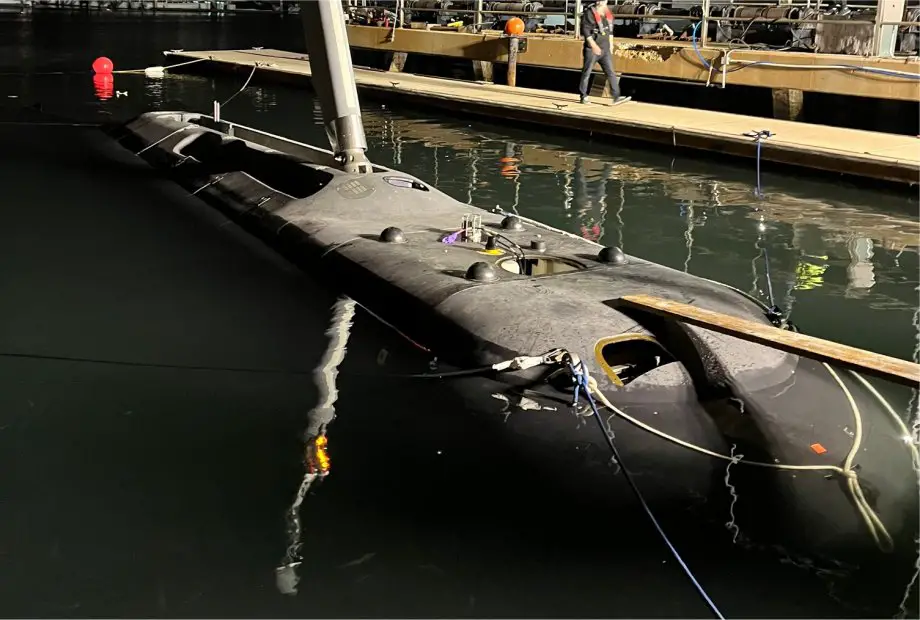According to information published by Boeing on March 26, 2024, the first XLUUV, referred to as Orca, of the US Navy has returned to the waters off Southern California's coast for tests.
Follow Navy Recognition on Google News at this link
 Extra Large Unmanned Undersea Vehicle, XLUUV, Orca in California. (Picture source: Boeing)
Extra Large Unmanned Undersea Vehicle, XLUUV, Orca in California. (Picture source: Boeing)
The Orca Extra-Large Unmanned Undersea Vehicle (XLUUV) supports a broad spectrum of potential missions, including mine countermeasures, anti-surface and anti-submarine warfare, electronic warfare, and strike missions.
The vehicle's autonomy allows it to operate for months without direct human intervention, emphasizing remote launch, recovery, operation, and communication capabilities. This autonomy reduces the need for navy personnel in the operation area, pushing forward operational efficiency and safety.
Technical characteristics of the Orca XLUUV include its variable length, which can extend from 15.54 meters without a payload to 26 meters with a payload section. It boasts a significant operational range of up to 6,500 nautical miles and operates optimally at speeds between 2.5 to 3 knots, with a maximum speed capability of 8 knots. The modular payload bay, a key feature of the Orca, supports up to 8 tons of dry weight and includes interfaces for a broad array of payload types.
Advanced navigation systems and communications technologies are integral to Orca's design. It employs a blend of inertial navigation units, doppler velocity logs, depth sensors, and surface-near communication methods including encrypted channels and Wi-Fi.
Additionally, it is equipped with forward-looking sonar and autonomous obstacle avoidance algorithms, ensuring safe navigation and operational effectiveness across various mission types.



